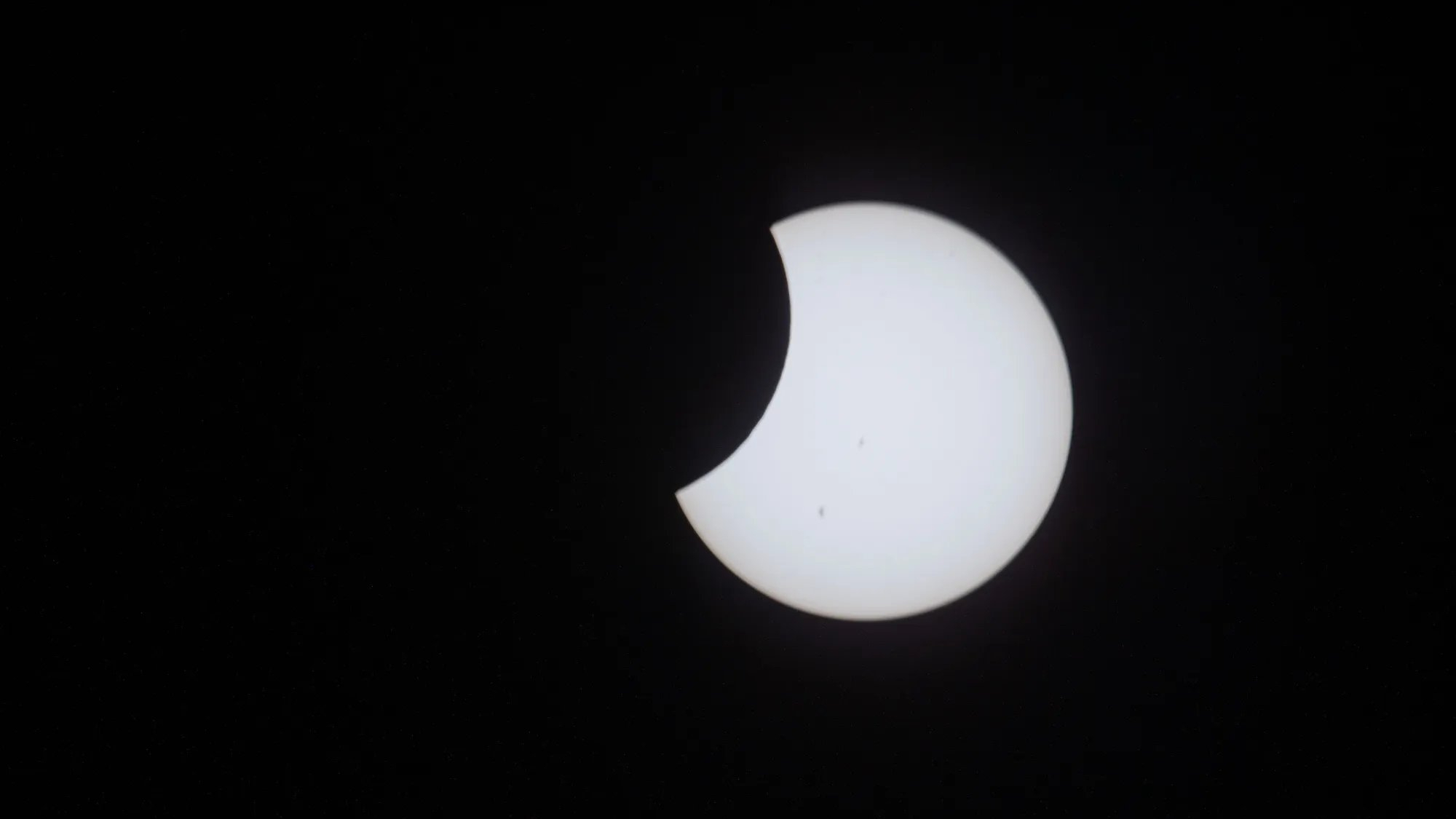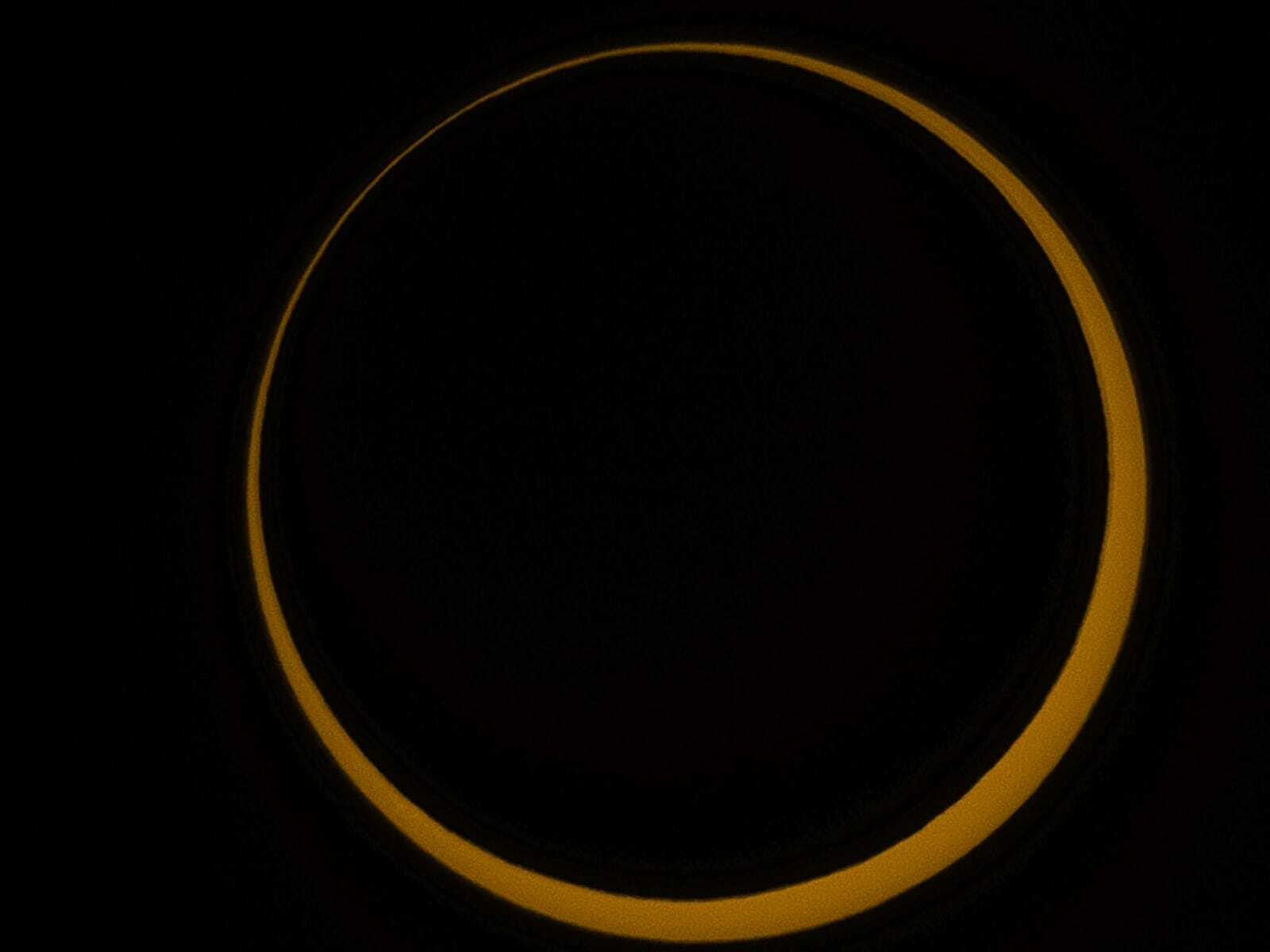
Not all of the skywatchers who enjoyed last weekend's solar eclipse were confined to planet Earth.
On Saturday (Oct. 14), observers along a narrow swath of land from the Oregon coast southeast down through Central and South America were treated to an annular solar eclipse: The moon blocked all of the sun's disk save for a thin band around the outside, which blazed as a bright "ring of fire."
Many more folks, however, saw a partial eclipse, in which the moon appears to take a bite out of the sun. Those observers included the occupants of the International Space Station (ISS), at least one of whom captured a photo from that unique vantage point.
Related: Annular solar eclipse of 2023 wows skywatchers with spectacular 'ring of fire' (photos, video)

That photographer was NASA astronaut Jasmin Moghbeli, who arrived at the ISS in late August on SpaceX's Crew-7 mission.
We got to see the shot thanks to NASA's Marshall Space Flight Center in Alabama, which posted it on X (formerly called Twitter) on Tuesday (Oct. 17).
"The crew aboard the @Space_Station watched the annular solar eclipse on Oct. 14, from the best seat in the house (260 miles above Earth). As the moon passed in front of the sun, Expedition 70 Flight Engineer Jasmin Moghbeli captured this photo. Where did you watch from?" NASA Marshall personnel wrote in the post.
Get the Space.com Newsletter
Breaking space news, the latest updates on rocket launches, skywatching events and more!
Annular solar eclipses are a product of the moon's slightly elliptical orbit. They occur when the moon, sun and Earth line up perfectly for a total eclipse, but at a time when the moon is at its farthest point from our planet and therefore cannot cover the entire solar disk from an observer's perspective.
Skywatchers in North America will be treated to another solar eclipse less than six months from now. On April 8, 2024, a total solar eclipse will darken the skies above select observers in Mexico, the U.S. and Canada. You can learn all about that highly anticipated event in our 2024 eclipse guide.
Join our Space Forums to keep talking space on the latest missions, night sky and more! And if you have a news tip, correction or comment, let us know at: community@space.com.

Michael Wall is a Senior Space Writer with Space.com and joined the team in 2010. He primarily covers exoplanets, spaceflight and military space, but has been known to dabble in the space art beat. His book about the search for alien life, "Out There," was published on Nov. 13, 2018. Before becoming a science writer, Michael worked as a herpetologist and wildlife biologist. He has a Ph.D. in evolutionary biology from the University of Sydney, Australia, a bachelor's degree from the University of Arizona, and a graduate certificate in science writing from the University of California, Santa Cruz. To find out what his latest project is, you can follow Michael on Twitter.









